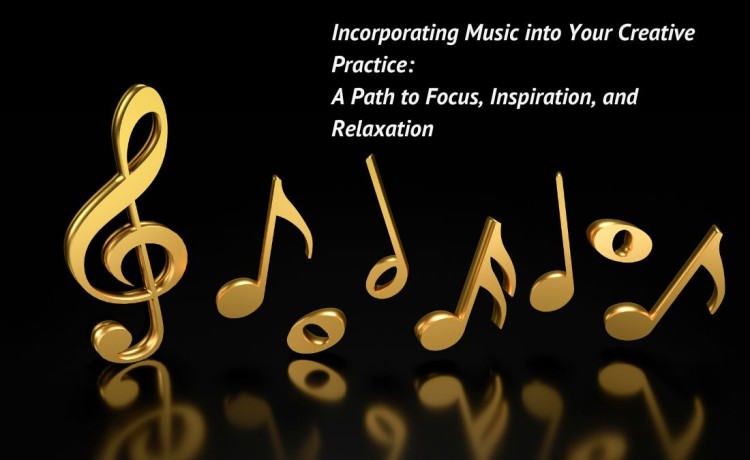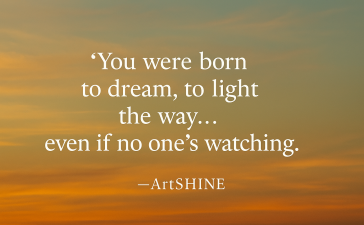Music has long been intertwined with the creative process, serving as a powerful tool to focus the mind, inspire new ideas, and reduce anxiety. Whether you’re an artist, designer, writer, or any type of creative, the right music can elevate your practice in surprising and meaningful ways. Many well-known creatives incorporate music into their daily routines, finding that it helps them stay in the zone, boosts their mood, and allows them to fully immerse themselves in their work.
In this article, we will explore how music can enhance your creative practice and offer recommendations on the types of music that work best for different stages of creativity. We’ll also look at examples of famous creatives who rely on music to fuel their artistic endeavours.
1. Music as a Tool for Focus
One of the most significant benefits of incorporating music into your creative practice is its ability to improve focus. Music can act as a mental anchor, helping to block out distractions and allowing you to zero in on your work. This is especially useful in today’s world, where constant notifications and distractions can pull your attention in multiple directions.
Certain types of music, particularly instrumental or ambient music, are ideal for enhancing focus. For example, classical music, with its soothing and steady rhythms, has been shown to stimulate the brain without distracting it. Pieces by composers like Bach, Mozart, or Beethoven can create a calm and structured environment that helps you maintain concentration.
In fact, the “Mozart Effect,” a term coined in the 1990s, suggests that listening to Mozart’s compositions may temporarily enhance spatial-temporal reasoning, making it easier to tackle complex tasks. While the scientific community has debated the extent of this effect, many creatives still turn to classical music to help them focus on intricate projects.
Other genres that promote focus include:
- Ambient music: Artists like Brian Eno or Tycho create atmospheric soundscapes that are perfect for background listening. Their music doesn’t demand attention but instead enhances your environment, allowing you to immerse yourself in your work.
- Lo-fi beats: Lo-fi hip-hop or chill beats have become a go-to for many creatives looking to maintain steady focus. With its mellow rhythms and repetitive patterns, lo-fi music creates a relaxed yet alert state of mind, helping you stay in the flow without getting overwhelmed.
2. Music as a Source of Inspiration
Music can also ignite creativity by stirring the emotions and sparking new ideas. Many creatives find that certain songs, melodies, or even lyrics can transport them to a different emotional space, leading to fresh insights and breakthroughs in their work. For this reason, music can be an invaluable source of inspiration during the ideation phase of a project.
For instance, renowned fashion designer Karl Lagerfeld was known to create his fashion collections while listening to classical music and opera. The sweeping emotions of these genres matched the grandeur and opulence of his designs, helping him visualize bold, elegant concepts.
Similarly, the famous painter Jackson Pollock often used jazz music to inspire his abstract, dynamic drip paintings. Jazz, with its improvisational nature and rhythmic complexity, matched the fluid, spontaneous movements of Pollock’s work. Listening to the music while painting allowed Pollock to channel that same energy into his creative expression.
If you’re looking for inspiration, try experimenting with genres that evoke different emotions or energies:
- Jazz: With its complexity, improvisation, and emotional depth, jazz can be a great genre for creative experimentation. Artists like John Coltrane, Miles Davis, or Thelonious Monk can provide a rhythmic backdrop that inspires new ideas and encourages creative freedom.
- World music: Traditional music from different cultures can broaden your creative horizons. For example, listening to Indian sitar music, African drumming, or South American folk tunes can introduce new rhythms, scales, and melodies that may inspire unique elements in your work.
3. Music for Relaxation and Reducing Anxiety
Creativity can sometimes be accompanied by stress and anxiety, especially when working under tight deadlines or dealing with creative blocks. Music has the power to reduce stress, slow the heart rate, and create a sense of calm. By incorporating relaxing music into your creative practice, you can soothe your mind and approach your work with greater clarity.
One famous example is Frida Kahlo, the iconic Mexican painter, who often listened to traditional Mexican music and folk ballads as a way to comfort herself while creating art. This music, deeply rooted in her cultural heritage, not only relaxed her but also helped her connect with her emotions and memories, which were central to her deeply personal work.
If you’re feeling anxious or overwhelmed, here are some types of music to help you relax:
- Nature sounds: Music that incorporates sounds from nature—such as ocean waves, bird songs, or rain—can be incredibly calming. This type of music helps your mind wander to peaceful places, reducing anxiety and allowing you to approach your work with a clearer mindset.
- Meditative or binaural beats: These are designed to help synchronize brainwaves, inducing relaxation and focus. Meditative music often features slow, repeating tones, which create a calming atmosphere conducive to deep thought and reflection.
4. Building a Personal Music Playlist for Creativity
Incorporating music into your creative practice is deeply personal, and what works for one person may not work for another. Therefore, it’s important to experiment with different types of music to find what best supports your own creative flow.
To get started, consider building a few playlists tailored to different stages of your creative process:
- Focus playlist: Include instrumental or ambient tracks that help you concentrate, such as classical music, lo-fi beats, or minimalist piano pieces.
- Inspiration playlist: Add songs that evoke strong emotions or tell compelling stories, whether they’re jazz compositions, world music, or even film soundtracks.
- Relaxation playlist: Curate a selection of calming tracks—nature sounds, meditative music, or soothing ballads—that help you de-stress and unwind during or after a creative session.
5. Embrace Music as a Partner in Your Creative Journey
Music is a powerful companion to the creative process, capable of enhancing focus, sparking inspiration, and promoting relaxation. Artists, designers, and creators across history have recognized its value and harnessed its power to elevate their work. Whether you’re tackling an intricate design, brainstorming new ideas, or overcoming creative block, incorporating music into your practice can provide the motivation and clarity you need to succeed.
Ultimately, the music you choose should resonate with you, support your emotional state, and create an environment where your creativity can flourish. So, put on your favourite tunes, pick up your paintbrush, keyboard, or sketchpad, and let the music guide you into your next creative masterpiece.
- Find out more
- Launch Pad + Accelerator Expressions of Interest
- Selling and Licensing Your Art & Designs Around the World with ArtSHINE.
- Looking for exciting new Art and Designs to license.
We’re here to help you to take action, just like we’ve helped thousands of other entrepreneurs, business owners, and creative professionals all around the globe.
Now is the time to let your passion SHINE.
Now is the time to Make Tomorrow Today!
To your success, Vinh Van Lam and Stuart Horrex Cofounders ArtSHINE.com





